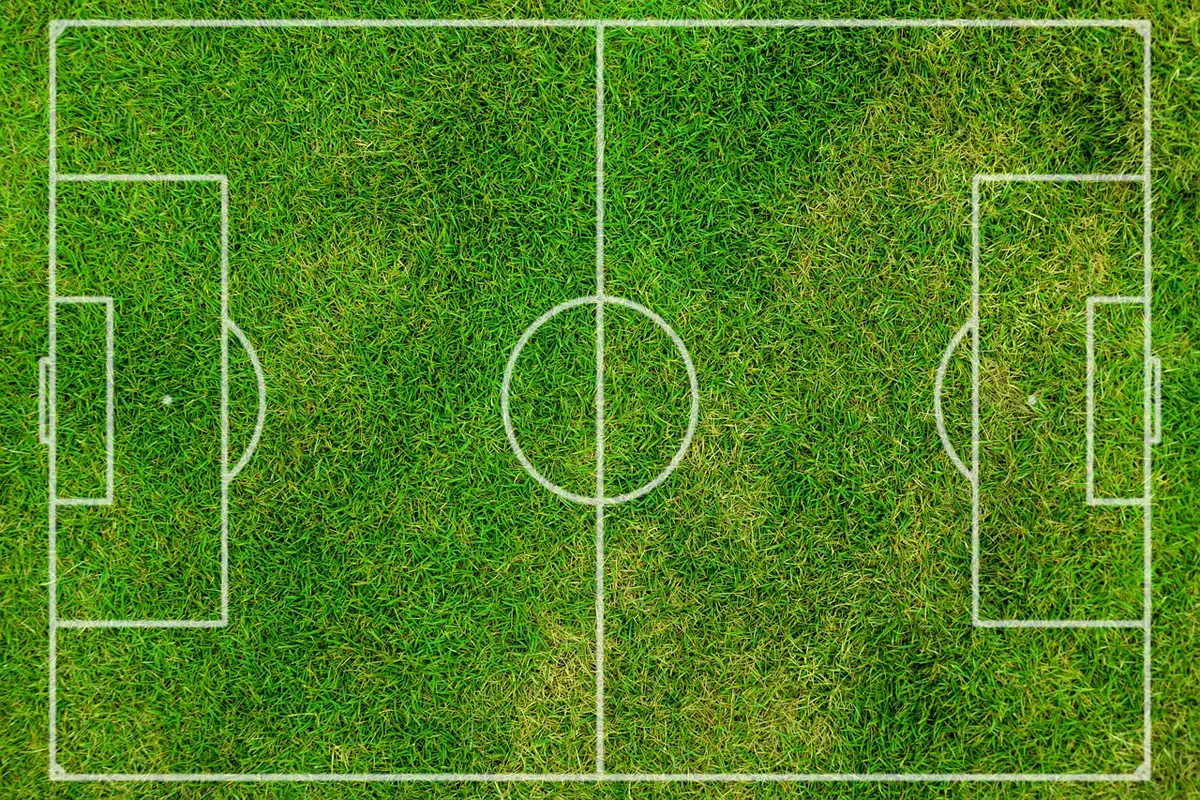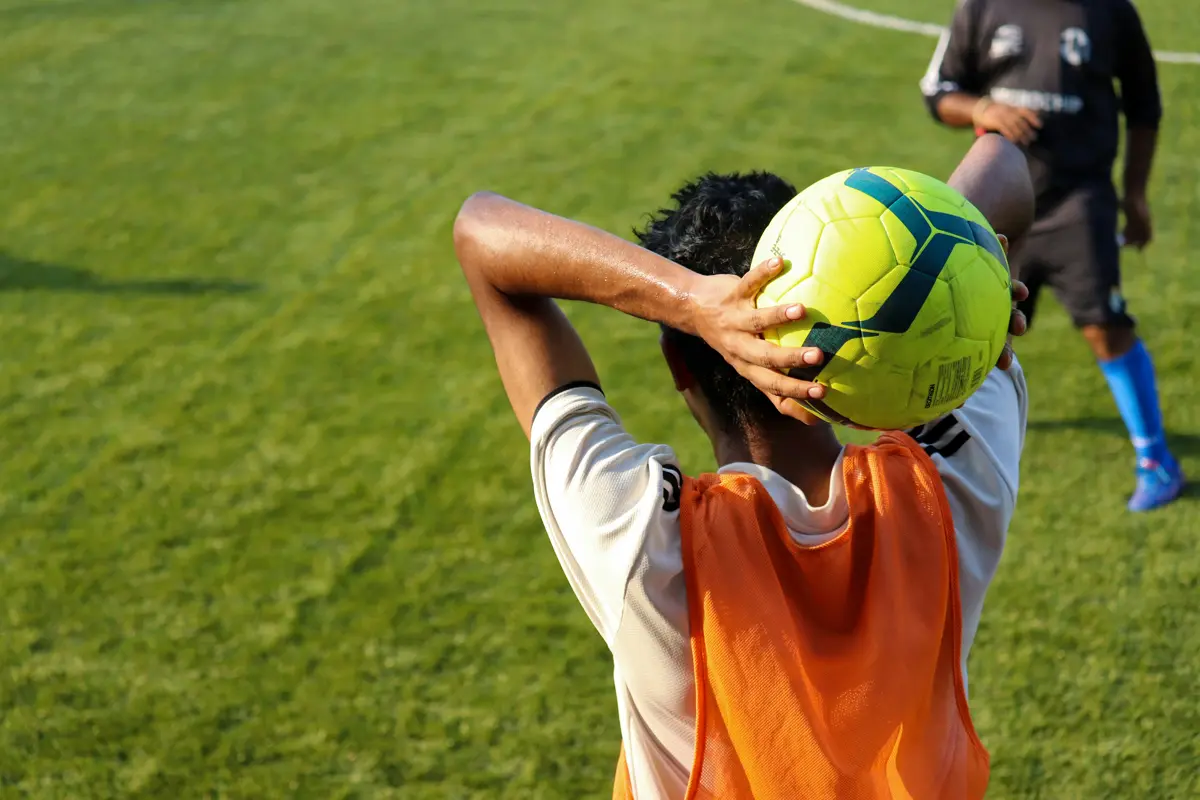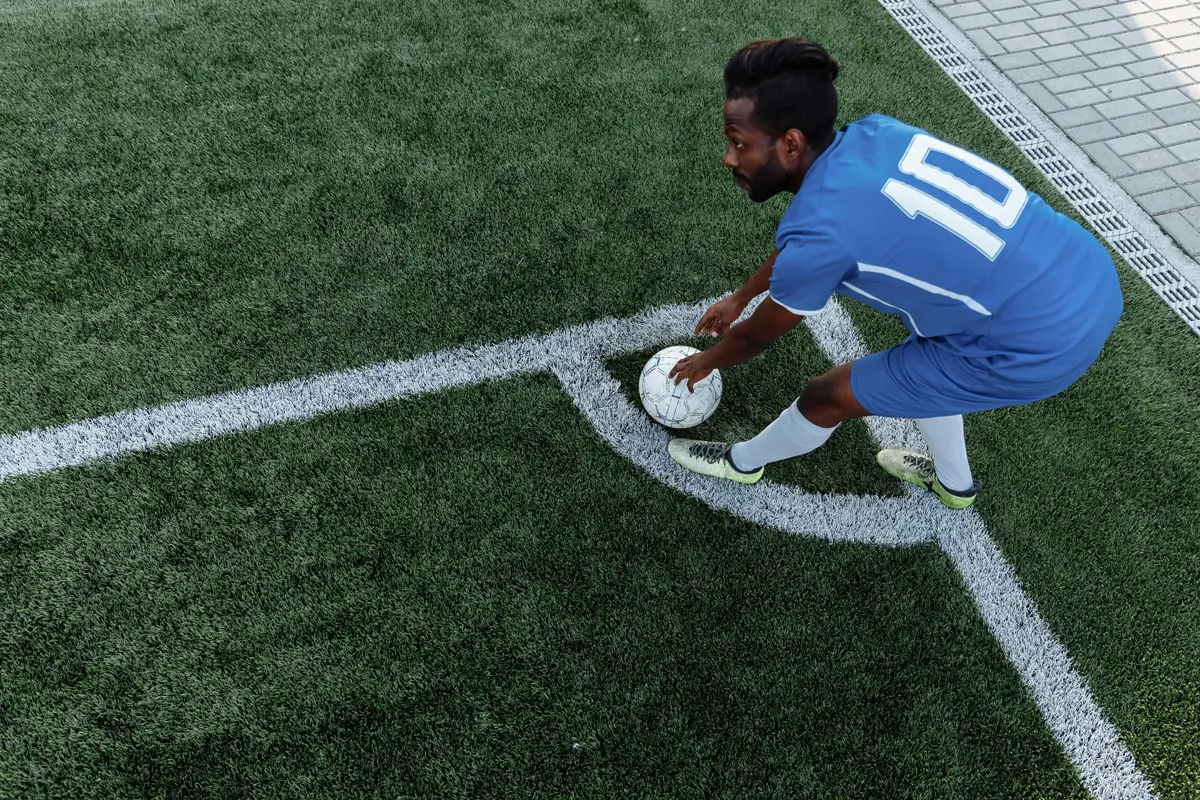Soccer is known for its versatility—11 players on each side, a ball, and two goals are all it takes to play a game. But, like any sport, it has its own set of unique rules, and adult recreational soccer leagues usually adapt those rules even further. So, we’ve put together a comprehensive guide on the rules of soccer and what modifications you might see in adult recreational leagues.
Whether you’re interested in co-ed adult soccer, small goal soccer, or some other variation, different rules will apply. We can’t cover them all because every league will be different, but you’ll get a good sense of what to expect from adult recreational soccer leagues.
Core Rules of Soccer: A Starting Point
The Most Basic of Basics
The objective of soccer is to score more goals than your opponent. Each team starts on opposite sides of the field and attempts to dribble the ball and shoot it into the net to score a point. While soccer is physical, there can’t be flagrant fouling (tripping, kicking, pushing, etc.). You can’t use your hands (unless you’re the goalie), but you can use your feet and your head to move the ball.
Number of Players and Substitutions
In the classic version of soccer, each team has 11 players, which includes one goalkeeper. However, in recreational adult leagues, it’s common to see games with 7v7, 6v6, or 5v5 players on each side, especially when the league is working with smaller fields and/or smaller goals (more on this in a bit).
- Substitutions are much more relaxed in adult recreational soccer compared to professional play. Instead of a limited number of subs, many leagues allow unlimited rolling substitutions, meaning you can swap in and out multiple times during a game. This keeps everyone involved and allows players to rest when needed. In typical games, players can only sub out when play is stopped.
Game Duration
Professional games last 90 minutes (two 45-minute halves). There’s a 15-minute halftime in between. These same rules often apply to adult soccer games. However,
- You may find shorter games, such as 30 or 40-minute halves or even a single 60-minute session.
- Games can also be split into quarters for more frequent breaks, especially in hot weather.
Out of Bounds
The ball must remain within bounds during play. If the ball goes outside the lines, play restarts in the following ways:
- Throw-in: If a ball goes out on the sidelines, the team who did NOT kick the ball out of bounds throws the ball back into play. The ball must be held fully behind your head and thrown in while both feet remain planted on the ground.
- Corner kick: When the defense kicks the ball out behind their own goal line, this earns the opposing team a corner kick, which takes place–where else–but on the corner of the field where the ball went out. Corner kicks create high probabilities for scoring, so teams want to avoid creating these opportunities for opponents.
- Goal kick: When the attacking team kicks the ball out behind their opponent’s goal line, the defense kicks the ball back into play from the penalty box.
Field Size and Equipment

Regulation soccer fields are between 110-120 yards long and 70-80 yards wide. In recreational 11v11 adult soccer, you might play on some fields that meet FIFA regulations, but that’s not usually the norm. Smaller fields are more common. And sometimes, goal sizes are smaller, too. Get updates and exclusive special offers. No spam–just valuable content. join the aps squad
- For 5v5 or 7v7 games, the fields are much smaller, which helps maintain the intensity and speed of play. These smaller-sided games have the faster pace of indoor soccer–but without the walls.
- Even in recreational soccer, there are equipment requirements. Shin guards and cleats are typically the two pieces of gear you’ll absolutely need. With cleats, you can opt for outdoor grass, artificial turf, or indoor futsal shoes.
Small-Sided Variations and Unique Rules
Small-sided versions of soccer—like 6v6, 7v7, and 5v5—are popular because they provide a fast-paced and engaging experience. This format is a hybrid of indoor and outdoor soccer, just without the walls typical of indoor soccer. Here are some key aspects:
6v6 and 7v7 Soccer Formats
These formats are ideal for recreational play and have rules specifically designed to keep things fun and engaging.
- Number of Players: There are five or six field players and one goalie for each team. Positions are slightly less defined than 11v11, with players playing both offensively and defensively.
- Field Size: These games are played on smaller pitches, usually 50-70 yards long and 30-50 yards wide.
- Game Duration: The games are shorter, often 25-30 minutes per half or a continuous 40-minute game.
- Substitutions on the Fly: Subbing might be on the fly—meaning players quickly sub in and out without stoppage time. This keeps the game’s pace very fast and can be a test to your cardiovascular fitness if there aren’t enough subs!
- No Offside Rule: In most recreational small-sided games, offside usually isn’t a thing. The smaller space of the field makes it much less relevant.
5v5 and Futsal Formats
5v5 and futsal are even faster-paced formats that are usually played on yet smaller fields or indoor courts, like a gymnasium.
- Field and Surface: Futsal is typically played on a hard surface, while 5v5 can be played on turf or grass. The field size is roughly 25-42 yards long and 15-25 yards wide.
- Game Duration: Futsal games usually have 20-minute halves with a continuous clock, whereas 5v5 matches are similarly short and designed to emphasize speed and skill.
- Kick-Ins Instead of Throw-Ins: In both futsal and 5v5, players often use kick-ins to restart play rather than traditional throw-ins, making it easier for players to get back into action quickly.
- Substitutions: Subbing on the fly is standard, as we already mentioned, which makes the game fast and intense.
- No Slide Tackling: To reduce injury risk, especially on hard surfaces, slide tackling is typically banned in futsal and often in 5v5 games.
Key Recreational Rules and Adaptations
Fouls, Physicality, and Safety
- Fouls in adult recreational leagues are more strictly monitored, especially to protect players from injury. Most referees prioritize player safety, meaning aggressive play is discouraged. Fouls can be intentional, like shoving another player, or unintentional, like accidentally tripping a player or touching the ball with your hands.
- Slide Tackles are usually permitted in open adult soccer leagues with more skilled divisions. On the other hand, sliding is typically banned in very casual recreational leagues or leagues with Over 30s, Over 40s, etc. divisions. Slide tackling is an inherent part of soccer, but it becomes dangerous and risky if you’re not skilled (or are old like me).
Modified Offside Rules
In many adult leagues, the offside rule is either relaxed or eliminated for small-sided games. In 11v11 games, the traditional offside rule applies. The basic idea of the offside rule is that when an attacking player is on the opposition’s half of the field and receives the ball, he or she must have an opposing player between them and the goal (not counting the goalie).
Think of it as anti-cherry picking. You can’t just hang out near the goalie the whole game, waiting to pop the ball into the back of the net when your teammate boots it to you from center field, and there is not an opposing field player anywhere in your radius.
You can’t be offside on your half of the field. You also can’t be offside on a throw-in or corner kick. There are some other nuances, but you get the general idea.
Free Kicks and Penalties
- For fouls, free kicks are awarded as direct or indirect, but often, these are simplified for recreational play. Penalties are also taken closer due to the smaller field size. Referees award penalty kicks when an infraction takes place within the penalty box.
- While minor offenses, like fouls, are resolved with free kicks, major offenses will earn you a yellow or red card. A yellow card is more of a warning, and you’ll remain in the game–unless you get two in one game—two yellows=ejection. A red card earns you immediate expulsion from the game. Yellow card offenses can range from trash-talking to the opposing team or ref, repeating behavior the ref told you to stop, or purposely delaying the game. Dangerously slide tackling with cleats up, cussing out the ref, or starting a fight with a player warrants a red card. Indoor soccer sometimes uses a blue card as well. Like hockey, a blue card will earn players a time-out in the penalty box for several minutes, and their team will have to play down a player during that time.
Goalkeeper Roles and Restrictions


- Goalkeepers are the only players able to use their hands (except throw-ins) in a soccer game. Once a goalie saves a ball, they have six seconds to hold it before they need to kick or throw it out of the box. Recreational referees aren’t as stringent with this rule, but they’ll warn goalies if they hold the ball too long.
- If players pass the ball back to their goalie, this is the only time their goalie can’t use their hands. The exception: if a player uses their head to pass back, hands are allowed.
- The goalie may also not use hands anytime he or she is outside the penalty box.
- In some adult leagues, goalkeepers are given a bit more flexibility. For example, some leagues allow the goalkeeper to swap with an outfield player mid-game without needing to stop play entirely.
- In smaller-sided games, the goalkeeper might play a more active role, similar to an extra outfield player, particularly in futsal, where quick distribution is key.
Co-Ed Rules and Adaptations
Many adult recreational leagues are co-ed, meaning both men and women play together, and specific rules are implemented to promote balance and inclusivity.
Minimum Number of Women Players
- Co-ed games often require a minimum number of female players on the field at all times. For example, in a 7v7 game, teams might need at least two women on the field to ensure fair representation.
Modified Touch Rules for Men
- To ensure the game stays inclusive, some leagues apply rules to limit how many times a male player can touch the ball consecutively before passing. I’ve played in leagues where guys had a three-touch limit, and I’ve played in others where there was a five-touch limit. I’ve also played in co-ed leagues without touch limits. The idea behind it is that it prevents guys from hogging the ball. However, it doesn’t mean they’ll pass the ball to a female player, either. You’ll find some guys are super inclusive with women players, and others where they seem to forget women are even part of the game.
- In some co-ed formats, goals scored by female players might count as two points instead of one, encouraging teams to include women in offensive plays.
Emphasis on Fair Play
- Co-ed leagues place a strong emphasis on sportsmanship and fair play. Aggressive challenges are typically discouraged, particularly in mixed-gender situations. The focus is on keeping the atmosphere friendly and ensuring that all players, regardless of gender, feel comfortable and safe.
Additional Features in Recreational Play
Mercy Rules and Game Balance
- To keep games enjoyable, some leagues apply a mercy rule if one team is dominating the game. For instance, if a team is leading by a large margin, adjustments like adding extra players to the losing side or limiting the winning team’s scoring opportunities can be applied.
- These modifications ensure that everyone enjoys the match without feeling overly outmatched.
Flexible Restarts and Sportsmanship
Recreational leagues put a strong emphasis on sportsmanship. If a player goes down, opposing teams might kick the ball out intentionally to allow a pause so the player can recover, and the ball is usually returned once play resumes.
No Extra Time
In regulation soccer, the clock doesn’t officially stop for injuries when a player could be down for several minutes, but the referee will add extra time to the end of a game to compensate for this. This doesn’t really happen in recreational soccer. Regardless of any potential lost time, if a game is 90 minutes, it ends at 90 minutes–not 90 minutes plus 11 minutes stoppage time.
Wrap Up
While this guide surely isn’t exhaustive of all the variations you’ll find within the world of adult recreational soccer, it gives you a good understanding of some of the differences you might encounter. Now that you’re ready to give adult soccer a whirl, head over to our directory and find yourself a place to play.








